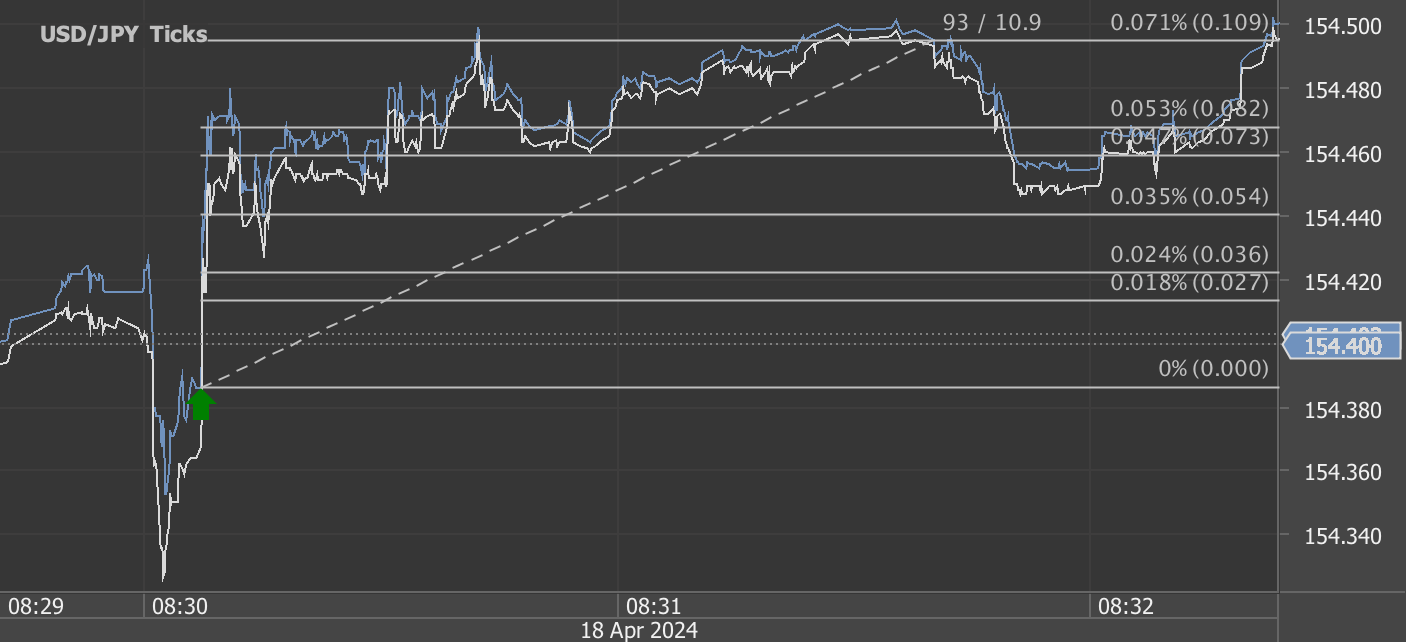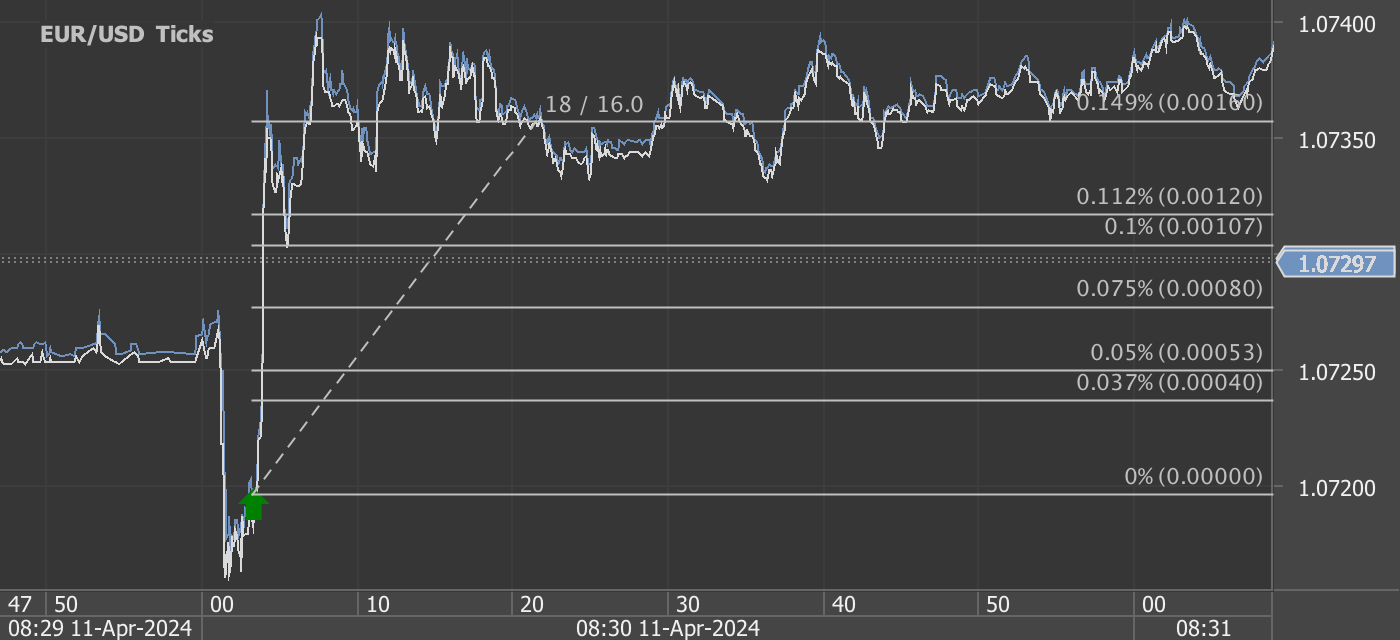According to our analysis there was a potential of 384 pips / ticks profit out of the following 12 events in April 2024. The potential performance in 2023 was 13,607 pips / ticks.
April 2024
DOE Natural Gas Storage Report (10 ticks / 4 April 2024)
Canada Labour Force Survey (46 pips / 5 April 2024)
US BLS Consumer Price Index (CPI) (57 pips / 10 April 2024)
DOE Petroleum Status Report (38 ticks / 10 April 2024)
US BLS Producer Price Index (PPI) (35 pips / 11 April 2024)
DOE Natural Gas Storage Report (21 ticks / 11 April 2024)
US Retail Sales (39 pips / 15 April 2024)
US Philadelphia Federal Reserve Bank Manufacturing Business Outlook Survey (20 pips / 18 April 2024)
Sweden Labour Force Survey (67 pips / 24 April 2024)
Canada Retail Sales (13 pips / 24 April 2024)
US Gross Domestic Product (GDP) (18 pips / 25 April 2024)
Canada Gross Domestic Product (GDP) (20 pips / 30 April 2024)
Total trading time would have been around 12 minutes! (preparation time not included)
Economic Reports: A Snapshot of April 2024's Influence on Financial Markets
April 2024 was a bustling month for financial markets, with numerous key economic reports released globally that influenced trading behaviors and investor sentiment. In this post, we'll delve into some of the most significant reports and their impact on market fluctuations, measured in ticks and pips.
Natural Gas Storage and Petroleum Status in the US
The Department of Energy's (DOE) Natural Gas Storage Reports from April 4 and April 11 showed fluctuations of 10 and 21 ticks, respectively. These reports often influence natural gas prices which in turn impact energy stocks and ETFs. On a related note, the DOE Petroleum Status Report on April 10 also sparked a movement of 38 ticks, reflecting changes in crude oil inventories that typically sway energy markets significantly.
Canadian and Swedish Labour Markets
The Labour Force Surveys from Canada and Sweden, released on April 5 and April 24 respectively, revealed interesting labor market dynamics. Canada's report moved the market by 46 pips, while Sweden's had a more pronounced effect with a 67 pip movement. These movements highlight the sensitivity of currency markets to employment trends, as they often signal economic health and influence central bank policies.
US Economic Health through CPI and PPI
The US Bureau of Labor Statistics (BLS) released its Consumer Price Index (CPI) and Producer Price Index (PPI) on April 10 and April 11, leading to movements of 57 and 35 pips, respectively. The CPI is a primary gauge of inflation, while the PPI provides insight into the inflationary pressures at the producer level. Both are crucial indicators for the Federal Reserve's monetary policy decisions, affecting the dollar's strength and bond yields.
Retail Sales and Manufacturing Insights
US Retail Sales on April 15 saw a movement of 39 pips, reflecting consumer spending health, a key component of economic growth. The Philadelphia Federal Reserve Bank's Manufacturing Business Outlook Survey, moving by 20 pips on April 18, provided insights into the manufacturing sector's conditions, influencing equities in related sectors.
Gross Domestic Product Reports
The US and Canada released their GDP reports on April 25 and April 30, with market movements of 18 and 20 pips, respectively. GDP reports are pivotal as they summarize overall economic activity and health, influencing a wide array of investment decisions and policy considerations.
Conclusion
Each report in April 2024 painted part of a larger economic picture, influencing market dynamics in various sectors. For traders and investors, understanding these reports and their impacts is crucial for making informed decisions. As we look ahead, it will be interesting to see how these trends develop and what new data will shape the financial landscape.
Disclaimer: This blog post is for informational purposes only and should not be construed as financial advice. Always conduct thorough research and consider seeking advice from a financial professional before making any investment decisions.
Start futures/forex/oil/grains news trading with Haawks G4A low latency machine-readable data today, we offer one of the fastest machine-readable data feeds for US macro-economic and commodity data and macro-economic data from Norway, Sweden, Turkey Switzerland and ECB interest rates and statement.
Please let us know your feedback and check out our G4A low latency data feed.
All data is machine readable and available via API access in Aurora, CH1, NY4 and LD4. Free trials.















